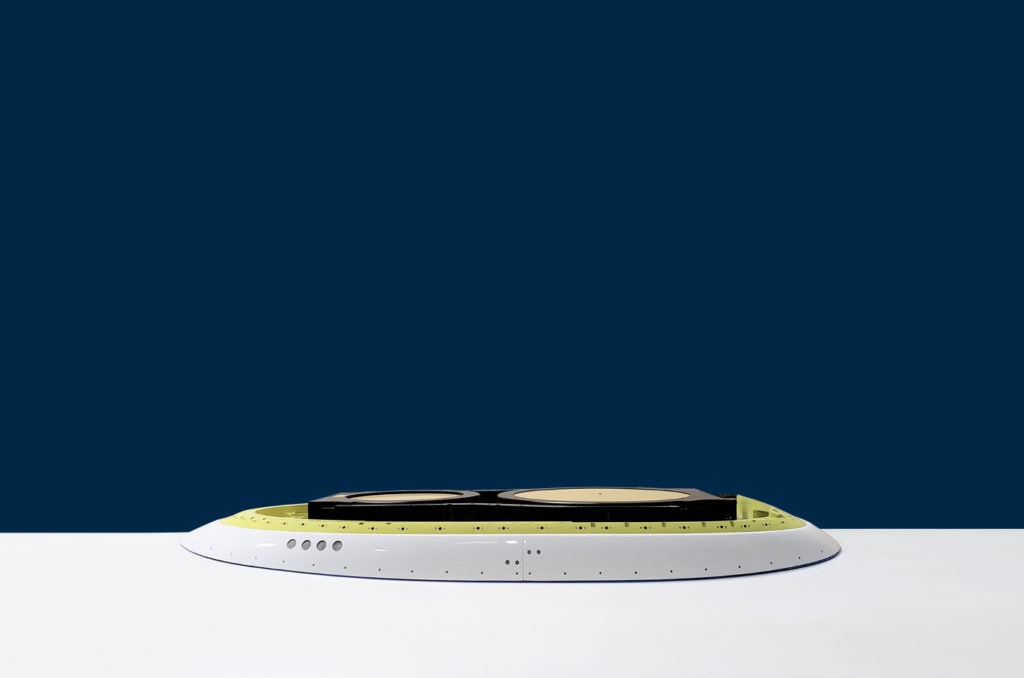Wide Receiver: Are Electronically Steered Antennae The Future of Satellite Connectivity?
Share

Lower latency, higher capacity and reduced costs are among the promises of hybrid LEO/MEO satellite constellations. Can connectivity suppliers ensure their antenna solutions remain relevant?
New hybrid low-Earth orbit and middle-Earth orbit (LEO/MEO) satellite constellations from SpaceX, OneWeb, Telesat and others indicate potential major gains in efficiency and performance for suppliers of in-flight connectivity. But these constellations don’t really exist yet, which creates a challenge for airlines installing hardware on aircraft today: They need antenna systems that support the technology of both today and tomorrow.
Electronically steered antenna (ESA) solutions offer great promise for these new networks; with no moving parts, they can track faster-moving LEO and MEO satellites as they race across the sky, and instantly switch between them and their geostationary (GEO) counterparts. But ESAs aren’t the only viable option. Gogo says its 2Ku system antenna, manufactured by ThinKom, is more than capable of supporting LEO/MEO networks.
ThinKom’s chairman and chief technology officer, Bill Milroy, echoes that sentiment, adding that demand for hybrid solutions is good for business. “We’re seeing [requests for proposals] that say, ‘We’re not interested in buying a GEO-only solution.’ And we don’t have anyone coming to us looking for a LEO-only solution.” Even with its slightly slower mechanical components, ThinKom’s solution offers quicker switching between satellites than traditional gimbal-mount designs. A Ka-band version of the ThinKom solution is currently undergoing certification and is slated to be active early this year.
Upstart ESA manufacturer Phasor sees the new constellations as “transformational” for the industry. CEO David Helfgott says that the company is “preparing for that reality today” with ESA technology designed to work seamlessly between LEO/MEO satellite constellations and GEO satellites, with features like instantaneous beam switching and high-speed satellite tracking. Astronics AeroSat president Matt Harrah also believes that an ESA solution would allow the company to “future-proof our product offerings.” The company has partnered with Phasor on development efforts.
“There is a lot of talk and hype and, in a number of cases, not a lot of clarity around new antenna technologies and on the practical aspects of them being viable for aviation mobility.” – Matt Harrah, Astronics AeroSat
Other vendors suggest that discounting traditional gimbal-mount systems is a mistake. Global Eagle, for one, developed a gimbal-mount antenna with QEST Quantenelektronische Systeme and successfully tested it switching between LEO and GEO satellites in late 2018. And, while Astronics AeroSat is committed to eventually including an ESA solution, Harrah notes that most connectivity suppliers are taking a “wait and see” approach: “There is a lot of talk and hype and, in a number of cases, not a lot of clarity around new antenna technologies and on the practical aspects of them being viable for aviation mobility.”
The first ESA solutions targeting aviation are aiming for certification in late 2019. Meanwhile, the hybrid offerings seem to be delivering sufficient performance to keep airlines moving forward with deployments.
“Wide Receiver” was originally published in the 9.2 April/May issue of APEX Experience magazine.


